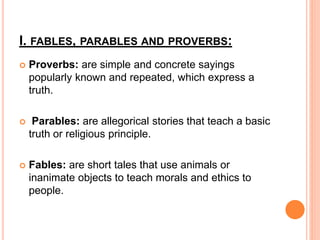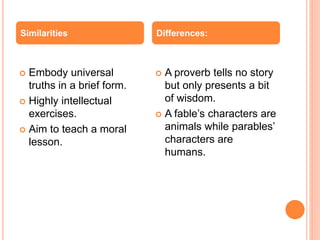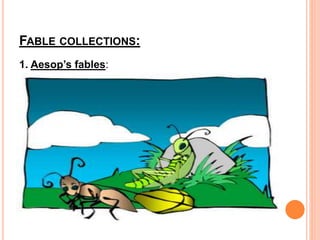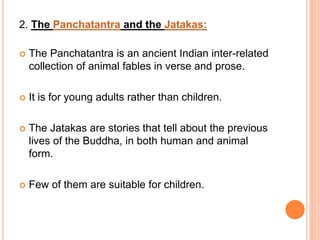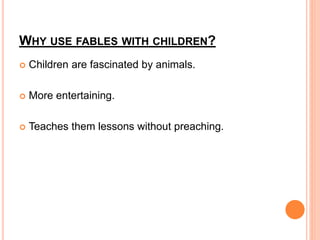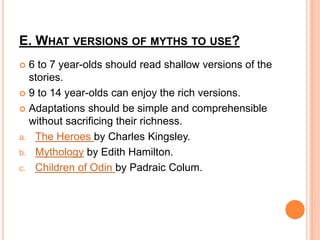The document explores the definitions and distinctions of fables, myths, and epics, emphasizing their importance in children's literature. It outlines various fable collections and the significance of myths and traditional literature in teaching moral lessons and cultural heritage. Additionally, it offers strategies for incorporating these literary forms into educational settings to enhance imagination and understanding of human experiences.


